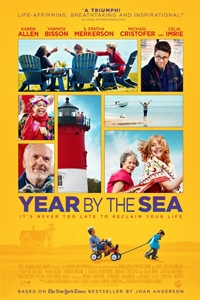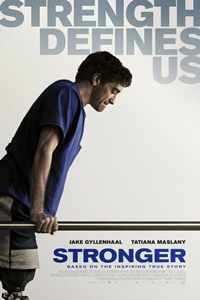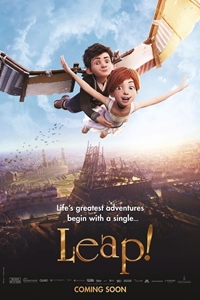Allen is likable in ‘Year by the Sea’ despite its familiar tide
Directed by: Alexander Janko
Written by: Alexander Janko, based on Joan Anderson’s memoir
Starring: Karen Allen, Yannick Bisson, Celia Imrie, Monique Gabriela Curnen, S. Epatha Merkerson, and Michael Cristofer
“Year by the Sea” – “If you don’t like the road you’re walking, start paving another one.” – Dolly Parton
In a manicured, pricey reception hall, Joan (Karen Allen) and her husband, Robin (Michael Cristofer), celebrate their son’s wedding, but almost immediately after, he reveals a different life change. Due to Robin’s job, they need to move from the east coast to Kansas. Suddenly, the two have emptied their house of furniture, and as they prepare for bed - on an air mattress - Joan’s mood turns somber. That next morning, Robin drives to Kansas, and Joan briefly stays behind before heading in the other direction to Massachusetts. She is separating from Robin, at least temporarily…but probably permanently.
Based upon Joan Anderson’s memoir with the same title, director Alexander Janko brings “Year by the Sea” to life on the big screen and, in the process, gives Allen a chance to let her hair down in a very likable role. A role in which her character didn’t like the road that she was walking, so she started paving another one.
Taking up residence in a rustic Cape Cod home that sits on an island, Joan figuratively plays a fish out of water by the sea, and the film presents a series of new experiences for this woman who tries to rediscover herself. To begin with, she struggles to even reach the house, because operating a row boat was never a skill that she mastered while raising a family and maintaining a household over the last 30 years. She needs a job but also wishes to make friends and explore her new seaside environment, and Joan dives deeply into this adventure through trial and error.
At first, the film does not really explain why Joan has decided to cordially separate from Robin, which is a little frustrating, but for those who may have drifted apart from a spouse after many years, no immediate justification from her is probably necessary. Lists of reasons do not need to be verbalized, at least during the film’s first act, and Joan’s willingness to embrace her daily naiveties with a smile is contagious.
Her smile and positive outlook also attract a series of new friends, but admittedly, her new encounters - and the people who come with them - feel cliché and preordained. Luce (Monique Gabriela Curnen) contends with an abusive boyfriend, another Joan (Celia Imire) is a positive free spirit and always ready with a quotable bit of advice and Cahoon (Yannick Bisson) is a rugged, younger fisherman who – we assume - will eventually make a romantic connection with Joan in some fashion. Whether or not Anderson met these individuals on her personal journey, the film presents them like a checklist for Onscreen-Joan, accompanied by a honey-soaked soundtrack.
Two years ago, Blythe Danner starred in “I’ll See You in My Dreams”, in which Carol (Danner) – a widow - rediscovers herself and begins dating again, after years and years of living alone. Both films feature women looking for a fresh start, but Danner’s picture wraps itself in touches of subtlety and humor, and the narrative gives Carol the room to breathe during her internal exploration. Conversely, “Year by the Sea” provides activities for Joan to explore – like searching for clams and running a 5K (mind you, not at the same time) - but her emotional growth - through her physical actions - does not cinematically register as well as it should.
Still, Janko’s eye for scenic beauty does register on the big screen, as several shots of the Cape’s coastline do spark wonder and awe, including one scene in which Joan relaxes on a beach with a group of happy seals. Yes, Joan has found her happy place, and for millions and millions of unhappy spouses who struggle for their identity and for brighter days, “Year by the Sea” does offer a positive message with its well-traveled story.
(2/4 stars)
Jeff – a member of the Phoenix Critics Circle – has penned film reviews since 2008 and graduated from ASU’s Walter Cronkite School of Journalism. Follow Jeff and the Phoenix Film Festival on Twitter @MitchFilmCritic and @PhoenixFilmFest, respectively.






































